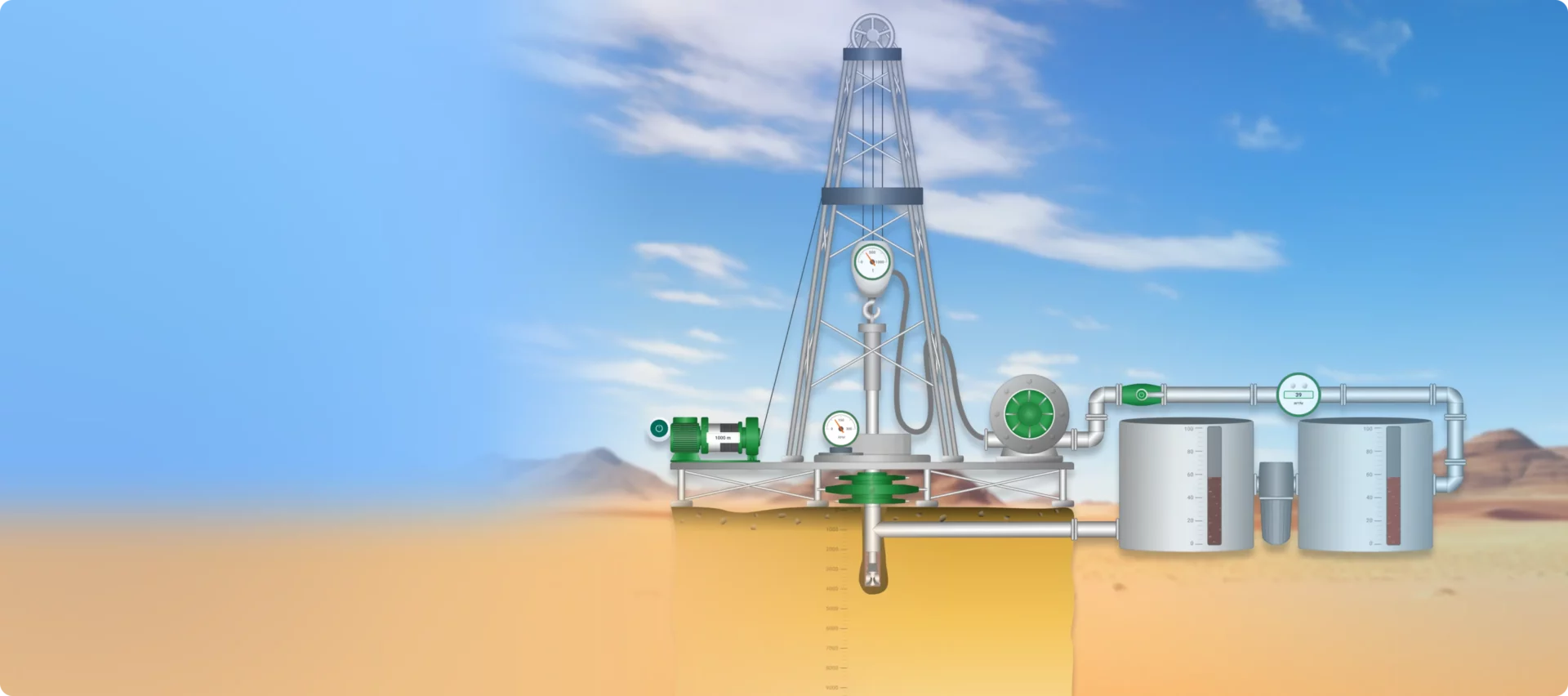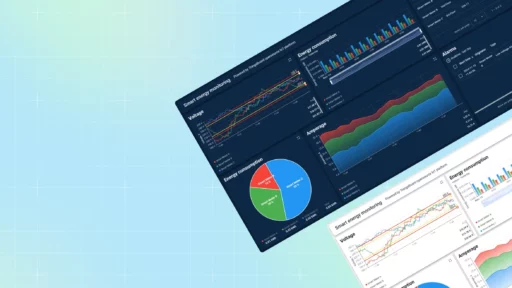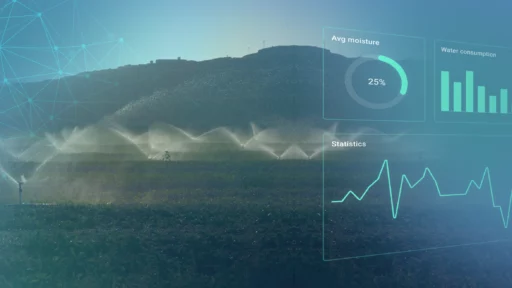The oil and gas industry is under intense pressure to avoid environmental disasters while improving overall performance and reducing maintenance costs. Alas, each sector of the industry faces unique challenges, they all revolve around three key areas: managing data, environmental and personnel safety, and timely reaction to critical incidents.
Usually, the appropriate hardware and software deployment is enough to address the challenges. Edge computing, the Internet of Things, machine learning, and automation are designed to alleviate the pressure and enhance operational efficiency and safety.
For instance, these technologies are well suited for deployment on an offshore oil rig or a nearby floating vessel to get reliable performance. Edge’s features are ideal for urgent tasks and do not require a continuous network connection. Therefore, the oil rig can be operated at any time and in any conditions.

The Challenges Overview
The oil rig is facing challenges that have a significant impact on efficiency, safety, and the environment. Extreme weather conditions and the remote location of offshore rigs add to the danger. The shortage of qualified personnel increases the risk of disaster. Constant monitoring and maintenance are required to cut possible financial losses, delays, and safety risks.
The Solution: Maintaining Remote Monitoring with Thingsboard Edge and SCADA System
Technologies such as IoT sensors, SCADA systems, and Edge computing make the drilling process more efficient, accurate, and safe by collecting and analyzing various data in real-time. Edge’s architecture allows for powerful and independent on-site computing, while the SCADA system provides remote access to the machines. Combined, they help to mitigate human error, reduce the need for manual intervention, and enable real-time decision-making.
The Architectural Design of the ThingsBoard Edge
The unique architectural design behind the ThingsBoard Edge guarantees exceptional performance and efficiency.
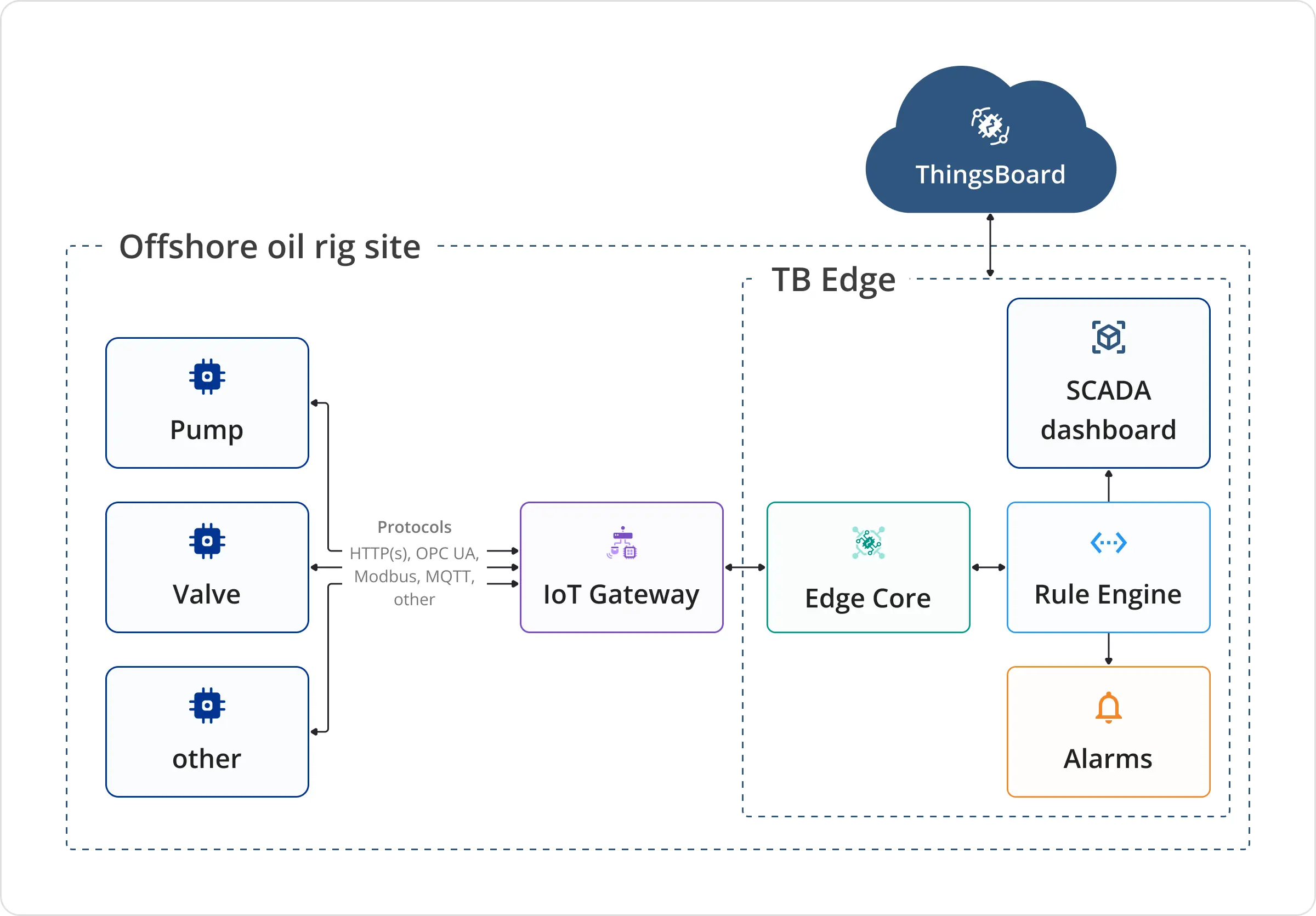
- The IoT devices and sensors continuously collect various data for analysis.
- The IoT Gateway, which supports an extended range of protocols, enables the integration of more devices, including legacy devices. It can also store data locally in the event of a network failure.
- The ThingsBoard Edge system processes the incoming data and visualizes it on the Dashboards with the numerous widgets. For clarity, we should highlight two important parts of the ThingsBoard Edge: the Edge Core and Rule Engine. The Edge Core interacts with the platform for tasks such as managing devices, telemetry data, and assets. The Rule Engine facilitates custom event-based workflows.
Edge SCADA Dashboards
To further improve operational efficiency, the ThingsBoard integrates support for SCADA-like HMI Dashboards.
The Edge SCADA Dashboards, with their interactive capabilities, enable remote access to equipment and real-time insights into its condition. With a clear understanding of system performance, operators can work with data and equipment with precision.
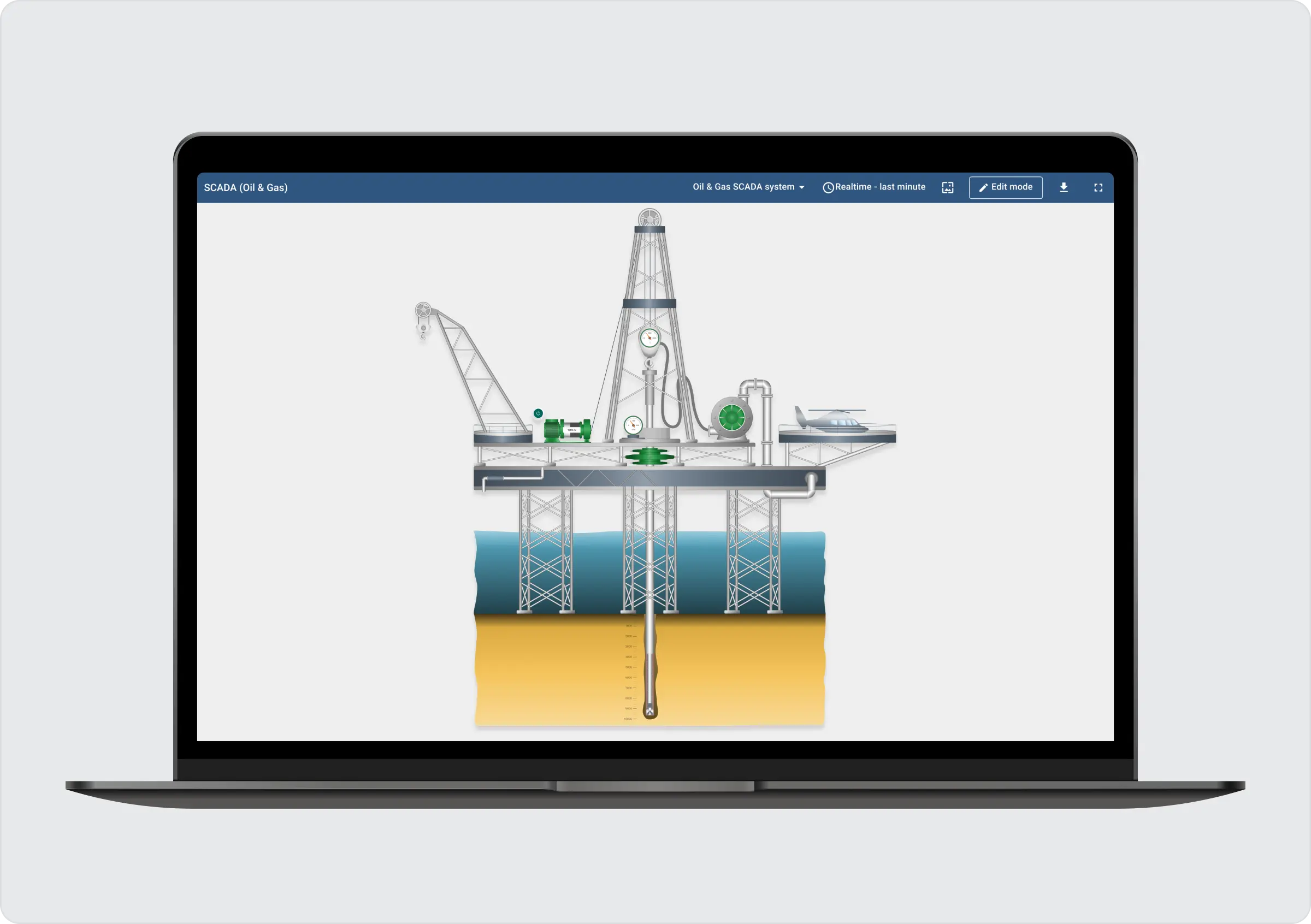
In an emergency, operators can use the Edge SCADA Dashboard to remotely assess the problem areas, machines, or devices and immediately implement safety protocols without putting workers at risk.
Let us consider a hypothetical scenario when a rapid increase in hook load occurs. In such an instance, the Edge system, which processes data locally, will promptly alert the operator, enabling a swift and appropriate response.
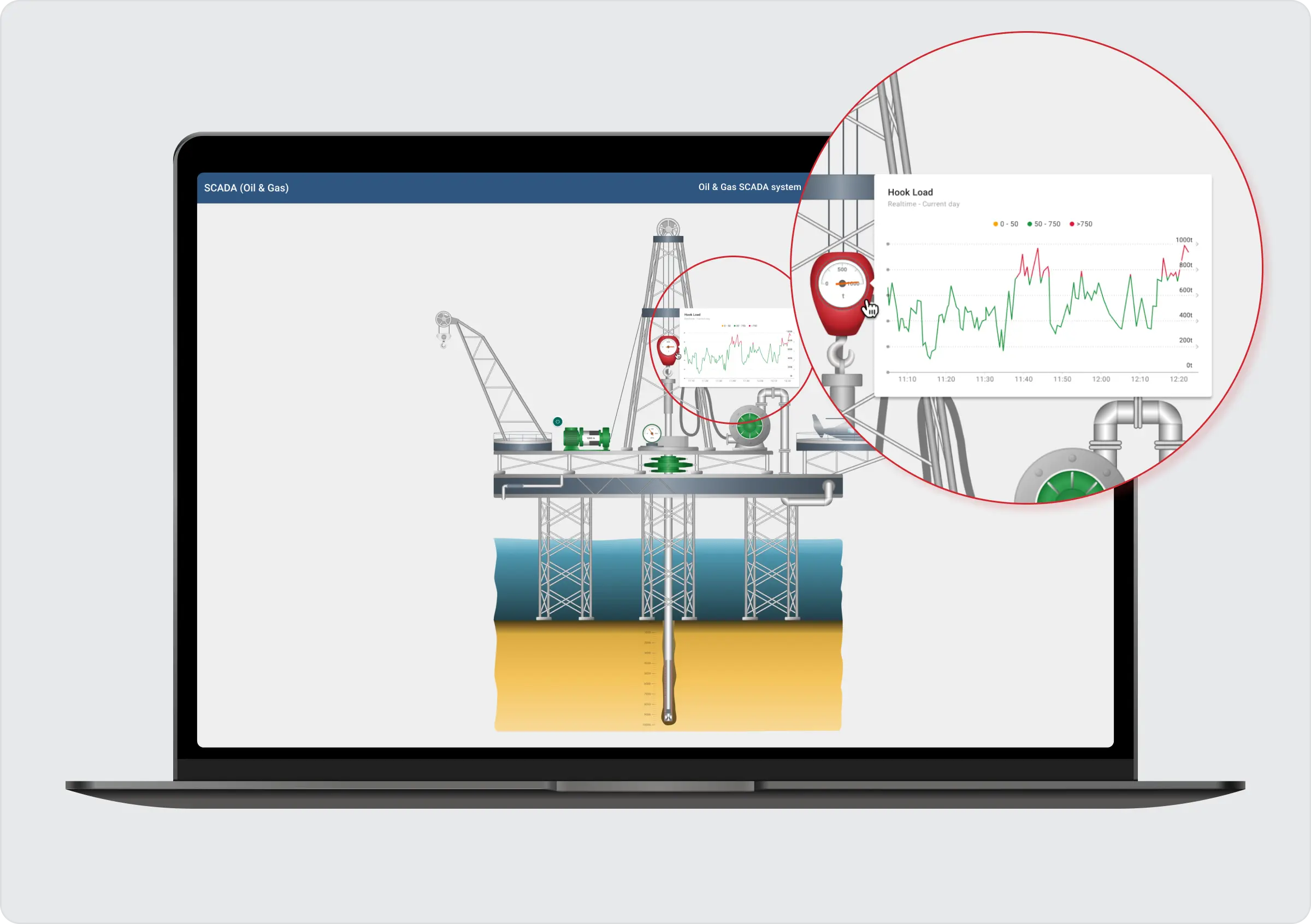
Predictive Maintenance
The 24-hour constant monitoring reduces the likelihood of equipment failure. By comparing the historical data with the recently collected data, operators can predict or anticipate equipment failures before they occur. It shifts the maintenance strategy from reactive to proactive and is called predictive maintenance.
The predictive maintenance strategy helps to reduce costly unplanned downtime, extend the life of critical equipment, and improve overall operational efficiency.
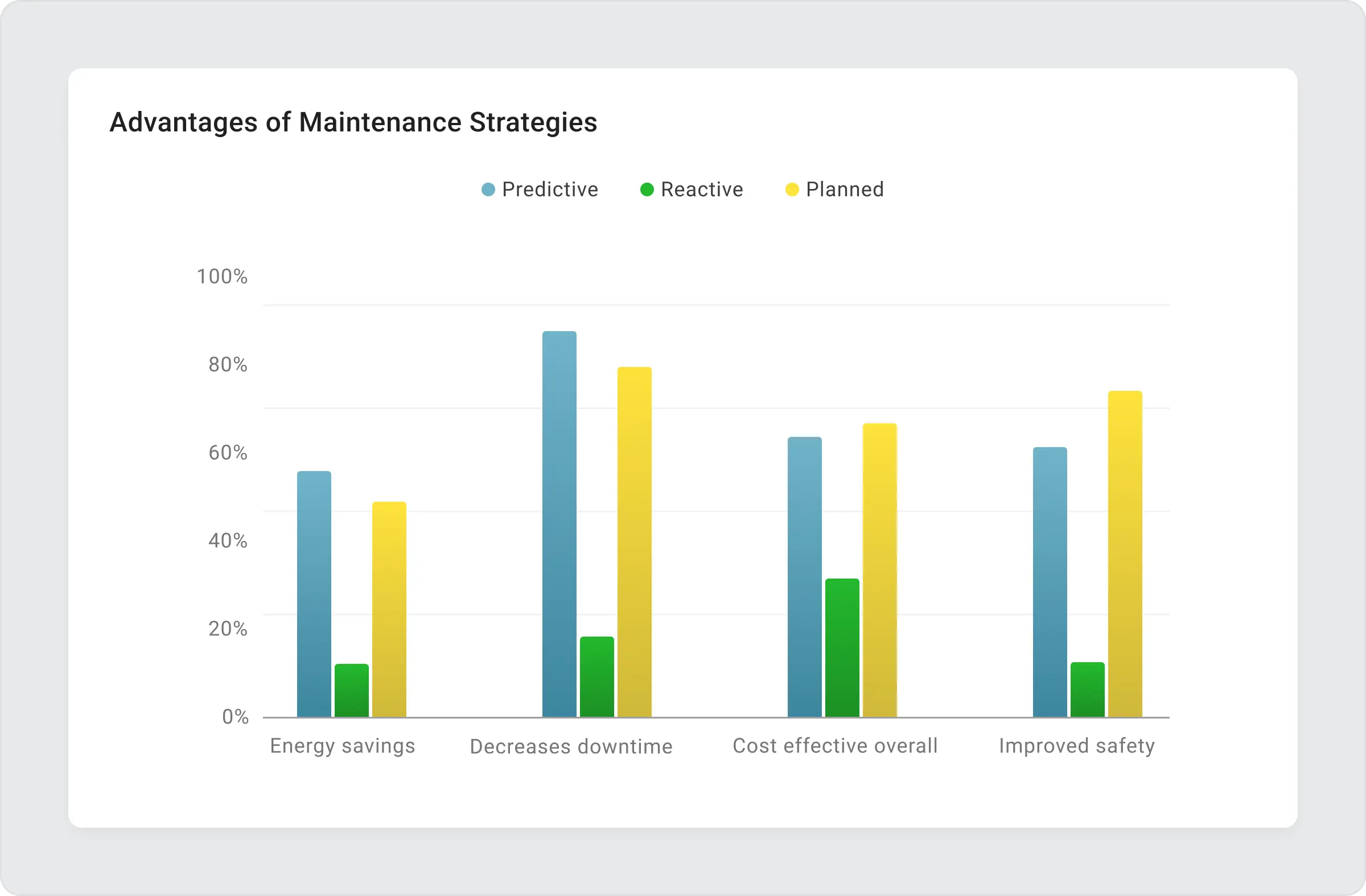
The bar chart illustrates the approximate success rates of various maintenance strategies.
The Conclusion
IoT technologies such as SCADA and Edge Computing are revolutionizing the oil and gas industry. They offer a wide range of benefits, including remote asset management. Local data processing and real-time monitoring capabilities help to reduce maintenance and operational costs and decrease downtime while increasing personnel response time, efficiency, and overall control over the remote oil rig platform.
By deploying Edge computing and SCADA dashboards, the oil and gas industry can confidently face the challenges of today and tomorrow and position itself for a future of sustainable growth.
Discover the power of ThingsBoard Edge and ThingsBoard IoT Gateway!

